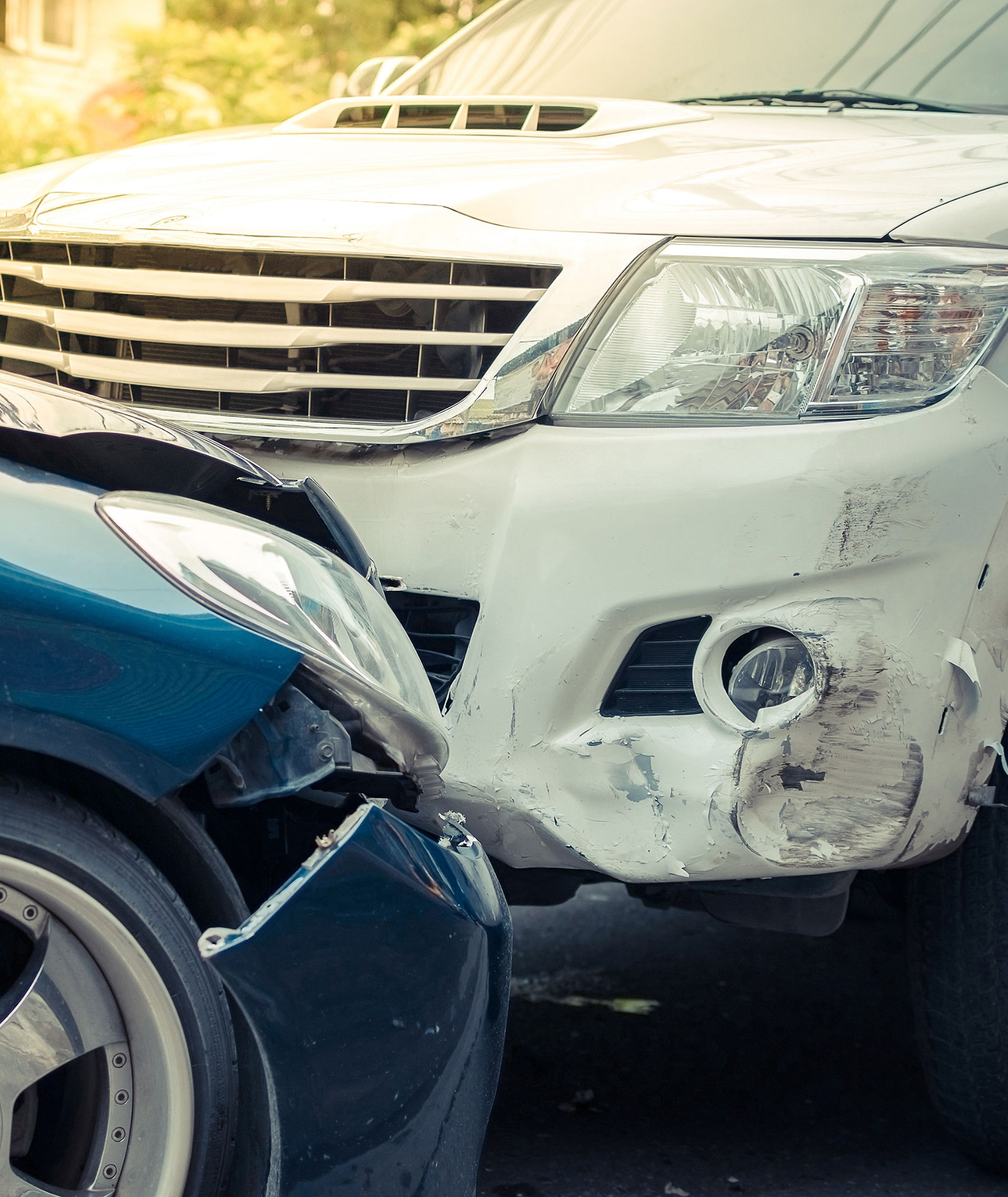Determining Fault In A Car Accident

A car accident can happen to anyone in virtually any situation. Understanding the cause of the accident is essential to deciding who is liable for it. Still, the type of accident can also be relevant to a claim. The kind of accident may affect the scope and nature of the victim’s injuries, which determine how much their claim is worth. Certain types of accidents also lead to assumptions about who may have been at fault, which you may need to consider if you are bringing a claim. The following is an overview of how accidents may be classified, depending on the type of impact.
The best way to protect your rights is to schedule a free consultation with a car accident lawyer. A seasoned attorney can review the facts of your case, answer your questions, and provide sound legal guidance.
Type of Impact
Accidents can be classified as head-on collisions, rear-end collisions, or side-impact accidents. Head-on collisions often happen when someone travels the wrong way down a one-way street or an exit ramp, or when they cross the median on a highway. These are some of the most devastating and potentially fatal types of accidents. Still, they are also some of the least common. The fault is usually apparent because one of the drivers was traveling in the wrong direction.
Rear-end collisions are much more common but can be less damaging because they tend to occur at lower speeds. The rear driver is often presumed to be at fault for not leaving an adequate stopping distance, but this is not always the case. Side-impact accidents may result when one vehicle fails to yield to another car at an intersection. Since the side of a car has less structural protection, individuals in the broadsided vehicle may suffer particularly severe injuries.
Head-On Collisions
Head-on collisions happen when two cars are driving in opposite directions and crash into each other. Although they are rare, they can be devastating for both parties, and they may even result in one or more wrongful deaths. They may happen because of a mistake, such as one driver driving on the wrong side of the road. They may also occur because of drunk driving, distracted driving, or brake failure. If you ever see a vehicle coming straight towards your car, you should do anything you can to avoid the head-on collision, even if it means you have to drive off the road.
If you are involved in a head-on crash, you will have to show negligence or recklessness on the part of the other driver to recover. To prove negligence, you will have to show the other driver’s duty of care, a breach of responsibility, causation, and damages. Generally, all drivers owe other drivers a duty of due care to avoid foreseeable risks of injury. If choosing to drive drunk or while very fatigued, it is likely to be considered a breach of responsibility. Doing so means you are more likely to make mistakes, such as operating the wrong way on a one-way road or swerving into oncoming traffic.
Suing After a Head-On Collision
It can be challenging to know who was responsible for a head-on crash. The impact may send both cars in different directions, putting them in different positions than they were in at the time of impact. A forensic engineer or accident reconstruction specialist may be able to figure out who was at fault or what happened based on skid marks on the road. It is crucial to retain a personal injury attorney to document all evidence of the head-on collision as soon as possible after an accident.
What if it appears that both you and the other driver were at fault? In that case, you may both bring personal injury claims against each other to sort out who is more responsible for the crash. Sometimes your insurance companies or attorneys will be able to negotiate a settlement. If the case goes to a jury, the jury will apportion fault between you and the other driver. Whether you can recover when you are partly to blame depends on whether your state follows a doctrine of comparative negligence or contributory negligence. In contributory negligence states, you cannot recover if you are at all at fault for the head-on collision.
Some of the devastating injuries that arise after a head-on crash are brain trauma, paralysis, multiple broken bones, and disfigurement. If your injuries are severe, you may need to change your job. When the other party is at fault, you may be able to recover economic and noneconomic damages for losses. These losses can include past and future medical bills, past and future lost wages, property damage, household services, and pain and suffering.
Side-Impact Accidents
A side impact accident is when a car gets hit on its side at an approximate 90-degree angle. Another name for these accidents is “T-bone” accidents. There are no significant structural barriers between a driver and a passenger in the car hit in a T-bone collision. In this case, severe injuries to them are highly likely.
Among the potential reasons for a side impact accident are distracted driving, drunk driving, and failure to yield. A driver who fails to follow the right of way laws at a four-way stop sign may enter the intersection at almost the same time as the next car and crash into that car. When a side impact collision happens, the victim may file a personal injury lawsuit.
Often, side-impact collisions are the result of negligence. A plaintiff who brings a personal injury lawsuit bears the burden of proving his or her case through evidence. To prove negligence, the victim of the accident must show that the driver who struck his or her car had a duty to act with care to avoid an unreasonable risk of harm. Additionally, the victim must prove that the defendant breached this duty by failing to exercise reasonable care, that the breach actually and proximately caused injury to the victim, and that actual damages resulted.
What Should You Do After a Side Impact Accident?
Whether you cause a side-impact crash or you are a victim, you should exchange insurance information with the other driver and obtain the contact information of any witnesses. If you can move around, you should document the damages to your vehicle and your injuries.
The other driver’s insurer may want to take a recorded statement or speak to you. The goal of the other driver’s insurance adjuster is to obtain admissions or other evidence to reduce its insured’s liability for the accident. He or she does not have your best interests at heart. It is essential to discuss what happened with only your insurer and your attorney.
Often, it’s not clear who is at fault. Skid marks at the scene, debris, property damage, the nature of the injuries, and witness testimony may be crucial evidence to determine what happened. Physical evidence disappears over time, and memories fade. That is why it is especially important to contact your insurer and attorney immediately after the accident to preserve and document any critical evidence. Many states have short, strict statutes of limitations of one or two years to bring a personal injury lawsuit.
Damages available to a personal injury plaintiff include economic and noneconomic costs. Financial losses may consist of medical bills, lost wages, out-of-pocket expenses, household services, and vocational rehabilitation. Noneconomic damages may include pain and suffering, inconvenience, and loss of consortium. Noneconomic costs are damages that may require the jury to judge intangible aspects of the case, such as how much a person experienced suffering or inconvenience after an accident. Differing juries may come to different results about the nature and amount of a plaintiff’s noneconomic damages. For that reason, tort reform supporters in some states have been able to get “caps” or limits placed on the amount awarded for noneconomic damages in particular types of cases.
Rear-End Collisions
Collisions in which one car strikes another car from the rear are among the most common types of car accidents. Fortunately, they are often less devastating than head-on collisions and side-impact accidents. The people in the front car are further from the site of the impact, and these crashes tend to occur at lower speeds. They may happen at traffic lights or stop signs, or on congested highways. The common assumption (and a legal presumption in many states) is that the rear driver is at fault for a rear-end collision, but this is not always true. In some circumstances, the rear driver may be able to rebut the presumption and show that the front driver or another party was at least partly at fault.
Determining Which Driver Was at Fault
Drivers need to leave a safe distance between their car and the vehicle in front of them, refraining from tailgating and allowing the front driver to come to a stop when needed. There may be debris or an animal on the road, or traffic may suddenly slow down for construction, poor weather, or some other reason. Someone who fails to leave a safe distance or who engages in aggressive behavior like tailgating another driver likely will be liable for a rear-end collision.
The front driver may bear some responsibility for the crash if they fail to use proper precautions in making traffic maneuvers or violate the rules of the road. If a driver suddenly stops to make a turn without using their turn signal, a driver behind them may argue that this was negligent. Another situation in which the front driver may be liable is when they shift into reverse suddenly when this would not be the expected maneuver under the circumstances. Drivers also are expected to keep their vehicles in a safe condition and handle any breakdowns prudently. Failing to pull over when a tire goes flat or a car suffers from a malfunction may be considered negligent. Moreover, drivers need to keep their brake lights in a functional condition so that drivers behind them can tell when they are slowing down.
In many rear-end collisions, both drivers are at fault to some extent, and their state’s rule of comparative negligence will apply. Each driver will be assigned a percentage of responsibility for the accident. Then each can recover a damages award that is proportionate to the other driver’s percentage of fault. (States that use contributory negligence will not allow either driver to recover damages from the other if both were at fault.)
Suing Other Parties
Other parties may be partly responsible for a rear-end collision in some cases. If the rear driver’s brakes malfunctioned, they might be able to bring the manufacturer of the brakes into the lawsuit. The argument for this must be made as soon as possible after the accident to persuade an insurer. If the collision resulted from an unexpected hazard in the road that caused a sudden stop, either or both drivers may be able to sue the party that was responsible for said hazard. For example, if debris fell off a truck, they may be able to sue the truck driver or trucking company, based on their negligent failure to secure the truck’s cargo. Proving causation may be more challenging in these cases. Carelessness by one or both drivers may be an intervening factor that broke the causal chain leading from the hazard to the accident. Each case is different, and victims can consult a car accident lawyer for guidance on the potential range of responsible parties.
Schedule a Free Case Review with a Car Accident Lawyer in West Palm Beach
To discuss your case with a personal injury attorney in West Palm Beach, contact Donaldson & Weston. Our lawyers offer free consultations and accept car accident claims on a contingency fee basis. Call our office at 561-299-3999 or send us a message on our Contact Page to set up a case evaluation.
